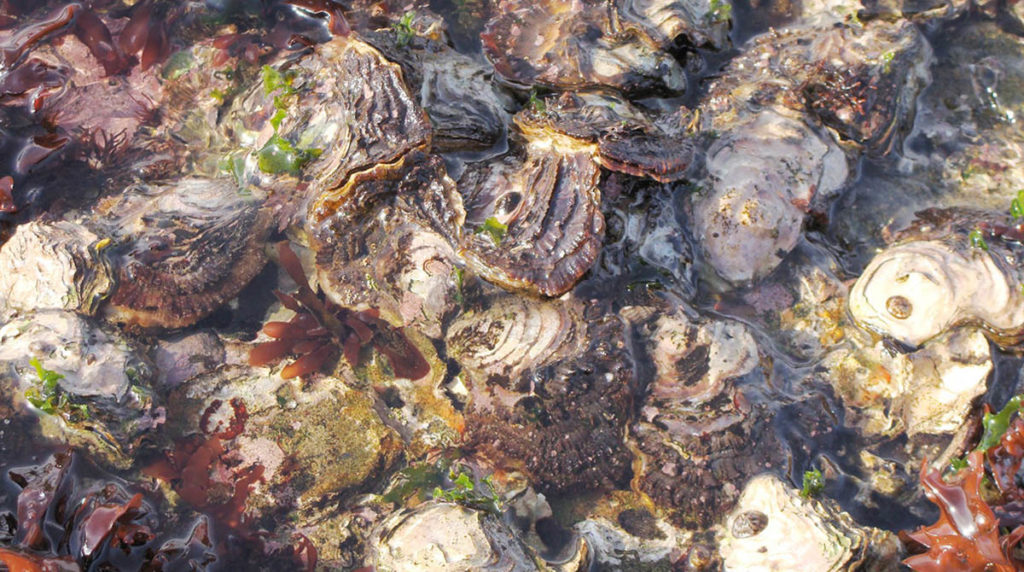Shellfish are often on plates in our homes and in restaurants. Many of these are bivalves – clams, oysters, mussels, abalone, and scallops. Think of how difficult it is to get to the tasty meat of some of these animals. Over millions of years, the bivalves evolved formidable defenses in their hard shells
Bivalves are molluscs, a large phylum (group) of animals consisting of over 70,000 species. Many species you might not imagine are related are: they’re all molluscs. If you go tide pooling, you might see lots of molluscs, depending on where you live. Chitons and snails are molluscs that reside in tide pools, as do those shellfish – clams, oysters, mussels, and abalone. Much more flamboyant are the sea slugs, shell-less snails (nudibranchs) that live in the low intertidal and also deeper. You might see them snorkeling or scuba diving. If you do, take only pictures of these flashy molluscs.
If you snorkel or scuba dive, you might be lucky enough to see a cephalopod: the squids, octopus and cuttlefish. Cephalopod means “foot-on-head.” These are molluscs that evolved the ultimate defense of becoming fast swimmers and masters of disguise.
Molluscs first appeared in the Cambrian period over 500 million years ago. They’ve evolved, adapted and survived. But, today molluscs face threats from our actions in the form of climate change. As greenhouse gas emissions have increased, the oceans have been absorbing tons of carbon dioxide. But, all that carbon dioxide has changed ocean chemistry – it’s becoming more acidic. As shelled-molluscs grow, they need calcium carbonate to build their shells but the ocean is becoming more and more corrosive, dissolving their shells. This isn’t a problem in the future, it’s happening in some places right now.
To read a blog I wrote about ocean acidification and oysters see: http://shapeoflife.org/blog/climate-change-robbing-us-tasty-food-and-quality-life
To see a video about the molluscs, watch Molluscs: the Survival Game on the Shape of Life: website: http://shapeoflife.org/video/molluscs-survival-game
To see some molluscs in action, watch these short videos:
http://shapeoflife.org/video/molluscs-pycnopodia-chases-abalone
http://shapeoflife.org/video/molluscs-octopus-camouflage
http://shapeoflife.org/video/molluscs-octopus-catching-crab
This video shows the basic body plan of molluscs: http://shapeoflife.org/video/mollusc-animation-abalone








